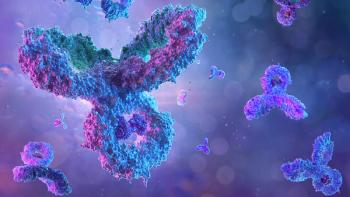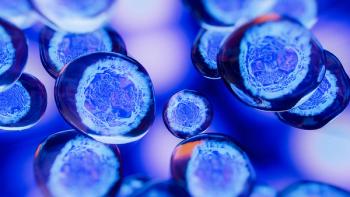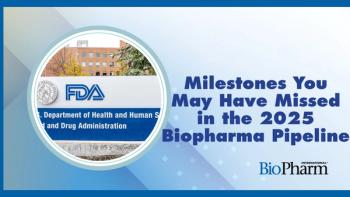
- BioPharm International-08-01-2004
- Volume 17
- Issue 8
Applications: A Total Water Purification System
Although sounding like a singular term, a water purification system actually consists of several key components.
Many of the analytical and molecular biology applications that require the use of water include high-performance liquid chromatography (HPLC),1 total organic carbon (TOC) analysis, sample and media preparation, rinse steps in assays, and gel electrophoresis. Different types of laboratories run experiments that require varying levels of water purity. What is needed in one lab might not be needed in another. Therefore, professional organizations have established water quality standards or guidelines to facilitate laboratory water purification within various industry sectors.
Water can be classified as Type I (ultrapure), Type II (pure) and Type III (general). Type I is typically "reagent-grade" water and used for applications requiring minimal interference and maximum precision to produce the highest-quality results. Recommended applications include atomic absorption, flame emission spectrometry, ligand assays, electrophoresis, high-sensitivity chromatographic procedures, buffer preparation solutions, standards and sample dilutions, fluorometric procedures, and other advanced analysis techniques. Type II water, commonly called "analytical-grade" water, is used for regular laboratory applications, where the presence of bacteria in purified water can be tolerated. These may include general reagents and buffers without preservatives, microbiology systems (not to be sterilized), and histology stains and dyes. Type III or "laboratory-grade" water is recommended for general, non-critical laboratory uses such as feedwater for producing higher-grade water or non-critical bacteriological media preparation. Also, filtration through activated carbon, distillation, or reverse osmosis (RO) can be used to reduce TOC levels in the water.
Regulatory needs, water quality monitoring, ease of use, space requirements, and cost are all significant issues that design engineers pay close attention to when designing a total pure water system for customers in laboratories, R&D, and manufacturing.
Millipore's Lab Water Division has designed a complete range of water purification systems to not only produce optimal water quality for scientific applications but also to accommodate an array of customer bases. Millipore's Elix advanced electrodeionization system and the RiOs reverse osmosis system employ a combination of purification technologies and integrate with a centralized system to create a total water system. The Elix systems produce Type II analytical-grade water from tap feed water and can generate up to 4,000 L/day for a laboratory. The RiOs systems are well-suited for applications requiring Type III laboratory-grade water and can produce up to 8,000 L/day. Water produced by the Elix and RiOs systems is ideal to use as feed water for laboratory equipment, such as glassware washing machines, autoclaves, and clinical analyzers. It can also be used for media, buffer, and reagent preparation.
A well-designed total system, including storage and distribution equipment, assures that water is recirculating through the piping network at the necessary flow rates and pressures without compromising water quality. For sensitive applications, Millipore's Milli-Q or Super-Q systems are able to further polish water at points-of-use to meet specific ultrapure water requirements.
THE PURITY PRINCIPLE
Although sounding like a singular term, a water purification system actually consists of several key components. The first part of the Elix and RiOs water purification systems includes the Progard TL Pretreatment Pack, which is tailored to the feed water source. It removes particulates, chlorine, and colloids from tap water to protect the next purification step — reverse osmosis (RO). Reverse osmosis then removes 95-99% of ions and 99% of dissolved organics (molecular weight >200 Dalton), microorganisms, and particles.
Millipore's reverse osmosis step includes advanced features, such as high-water recovery (for water conservation) and constant product flow rate. Typically, a standard RO-based system experiences a decline of as much as 50% in product flow rate as the water temperature decreases. With the Elix and RiOs systems, a constant flow rate from 7-30°C is always maintained. This is advantageous to researchers who can be assured that water is available in their required quantities during colder winter climates.
The Elix system further removes ionic contaminants to achieve higher water quality. It utilizes ion exchange resins, semi-permeable ion exchange membranes, and a small amount of electricity to efficiently remove ionic contaminants. Unlike conventional ion exchange or distillation, this process requires minimal quantities of water and energy, little maintenance, and no chemical regeneration or cleaning. Furthermore, the Elix modules utilize activated carbon beads within electrode compartments to effectively minimize the risk of scaling issues and to eliminate the need for additional water softeners.
The final step in the purification process includes sanitizing the water with a 254 nm UV lamp, allowing the Elix and RiOs systems to produce optimal water quality for bacteria-sensitive applications.
PURE AND SIMPLE REGULATIONS
Laboratories are becoming increasingly concerned with regulatory issues addressed in the Good Manufacturing Practices (GMP) and Good Laboratory Practices (GLP) issued by different regulatory organizations such as FDA and EPA in the US, the European Commission (EC) in Europe, the Ministry of International Trade and Industry (MITI) in Japan, and the Organization for Economic Development (OECD) worldwide.
Validation under such stringent regulations allows laboratories to determine analytical capabilities objectively and to enhance data credibility, reducing questions that may arise later.2 Millipore's Qualification Program ensures its water purification systems are designed for easy operation and minimal maintenance within a validated environment.
PURITY CONTROL
It is advisable not to rely on a single purification technology. Compared with other systems, Millipore's combination of purification technologies removes all main classifications of contaminants. In particular, the Elix and RiOs systems provide total control and monitoring capabilities of the make-up system as well as external pure water storage and the pure water distribution loop. All operating modes, performance parameters, water quality, indicators for routine system maintenance for the system and external distribution loop are displayed on a built-in display to continuously inform the user of all ongoing operations and provide automatic alerts and alarms. Resistivity and TOC monitors, designed to comply with the current USP <643> and <645> requirements, are integrated within these systems. They can monitor water quality at the system outlet and in distribution to ensure water quality.
Providing the required water quality at the final point-of-use is the ultimate test of a well-designed water purification system.
REFERENCES
1. Darbouret D, Stone T. From tap to ultrapure water: tracking organic contaminants. The R&D Notebook
#5.
Billerica (MA): Millipore Corporation; 2000.
2. Pilette JF. Validation: a growing concern. Waterline Newsletter No. 3. Billerica (MA): Millipore Corporation; 1999.
Articles in this issue
over 21 years ago
Editorial—Welcome to Our PMP Seriesover 21 years ago
Outsourcing Report: Contract Playersover 21 years ago
Producing Affordable, High-Purity Waterover 21 years ago
StreetTalk: PMPs: Easy as 1-2-3?over 21 years ago
Final Word: Plant-Made Pharmaceuticalsover 21 years ago
Green Plants as Biofactories for DrugsNewsletter
Stay at the forefront of biopharmaceutical innovation—subscribe to BioPharm International for expert insights on drug development, manufacturing, compliance, and more.





